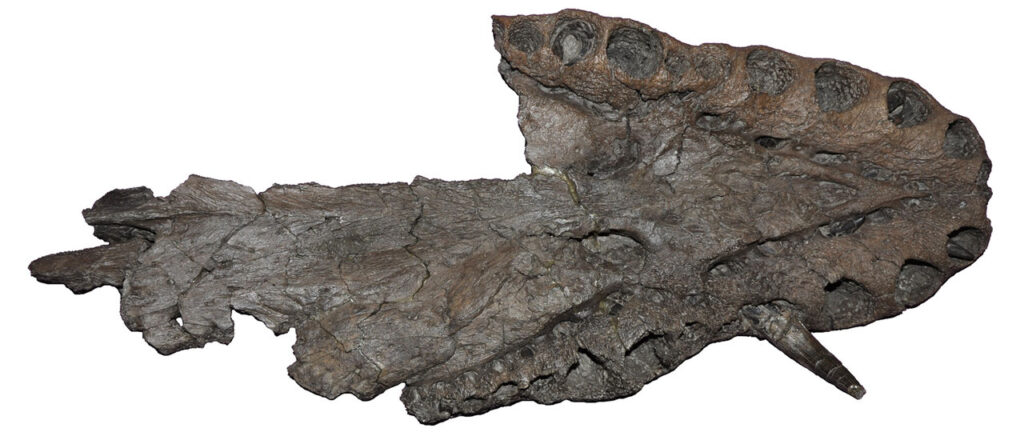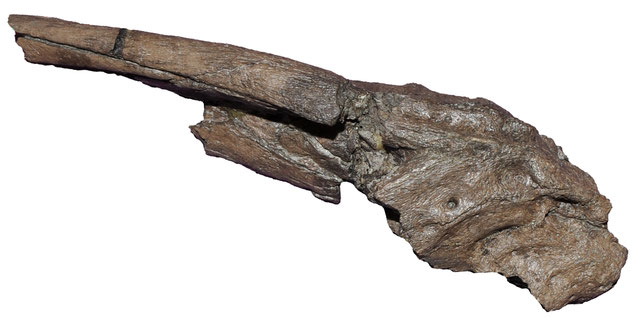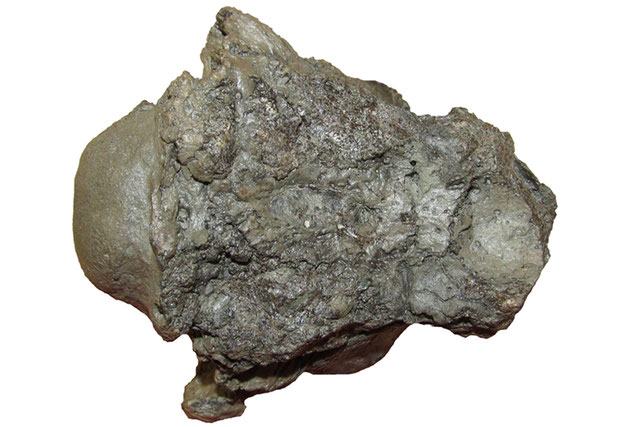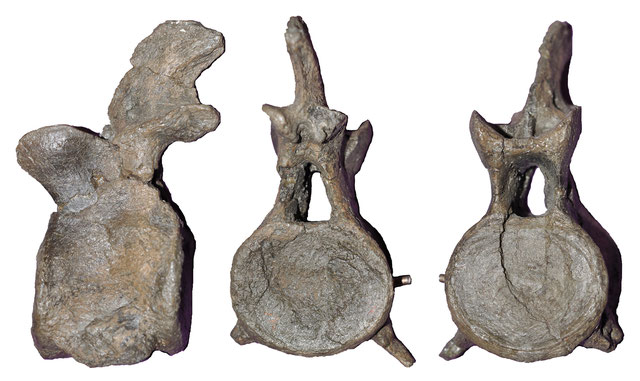Lagenanectes richterae, a Lower Cretaceous elasmosaurid from Germany

Our article on Lagenanectes richterae was published in Journal of Vertebrate Paleontology in 2017 (Sachs, Hornung & Kear, 2017). Lagenanectes is currently known only from an incomplete skeleton (BGR Ma 13328) that comprises part of the skull, several neck and tail vertebrae, as well as ribs and limb elements. Despite its rather fragmentary nature, it is one of the best preserved and most-complete plesiosaur specimens thus far discovered from the Lower Cretaceous of Europe.


The remains of Lagenanectes were recovered by the fossil collector Kurt Wiedenroth in 1964, from the Moorberg clay-pit in Sarstedt near Hannover in northern Germany. This mine no longer exists, but was in operation at the time that the fossil was discovered. Most critical was the need to secure the specimen before it was destroyed by heavy mining machinery. Wiedenroth himself was unable to recover all of the bones (he only rescued about 20 vertebrae), but he did inform another collector, F. O. Finzel, who (along with assistants) excavated the remainder of the skeleton a day later (Finzel, 1964, Simonsen, 2018). BGR Ma 13328 was eventually donated to the Geological Survey (Bundesanstalt für Geowissenschaften und Rohstoffe) in Hannover, but subsequently transfered to the Lower Saxony State Museum (Niedersächsisches Landesmuseum), where some parts are currently on display as part of the Wasserwelten (water worlds) exhibit.

Our investigation of Lagenanectes took place in between 2013 and 2015 and the first results were presented at the 2015 meeting of the European Association of Vertebrate Palaeontologists that took place in Opole (Poland) (Sachs et al., 2015). The individual was fully grown at the time of death, and had an estimated maximum body length of about 8 m. Skeletal maturity (sensu Brown, 1981) is indicated by ossication of the cranial elements and the neural arches which are fully fused to the vertebral centra The mandible is unique in its development of an indented platform-like symphyseal section, and laterally directed alveoli for the long fang-like teeth. These and several other features enabled us to establish Lagenanectes richterae as a a new genus and species.


The generic name, Lagenanectes, means “Leine swimmer“, and refers to the river Leine, which runs nearby the city of Sarstedt where the specimen was found. The species name, richterae, honours Annette Richter (Chief Curator of the Department of Natural History at the Lower Saxony State Museum) for her contributions to the palaeontological exploration of the state of Lower Saxony.


Our phylogenetic analysis of Lagenanectes placed it at the base of the elasmosaurid radiation. Although the exact age of Lagenanectes is unknown (it ranges from the lower Hauterivian and lower Barremian) an upper Hauterivian age is likely, and consistent withits status as one of the earliest members of this globally distributed clade.



Unusually, BGR Ma 13328 also exhibits numerous bone pathologies, including massive osseous outgrowths on the basioccipital and atlas vertebra. These are the subject of ongoing study, but appear to have resulted from bacterial infection, perhaps from open wounds (Sachs et al., 2015).



Finzel, E. (1964) Plesiosaurus fund aus der Unterkreide. Der Aufschluß 15: 307.
Sachs, S., Hornung, J., Wohlsein, P. & Kear, B. (2015) A new basal elasmosaurid skeleton with joint pathologies from the Lower Cretaceous of Germany. In: J. Jagt, G. Hebda, S. Mitrus, E. Jagt-Yazykova, A. Bodzioch et al. (eds.) EAVP. XIII Meeting Opole, Abstracts: 131.
Sachs, S., Hornung, J. J. & Kear, B. P. (2017) A new basal elasmosaurid (Sauropterygia: Plesiosauria) from the Lower Cretaceous of Germany. Journal of Vertebrate Paleontology, 37(4): e1301945
Simonsen, S. (2018) Lagenanectes – ein Plesiosaurier aus der Unterkreide Niedersachsens. Der Steinkern 35: 78-82. Further reading Sci News Uppsala University press releaseWikipedia
